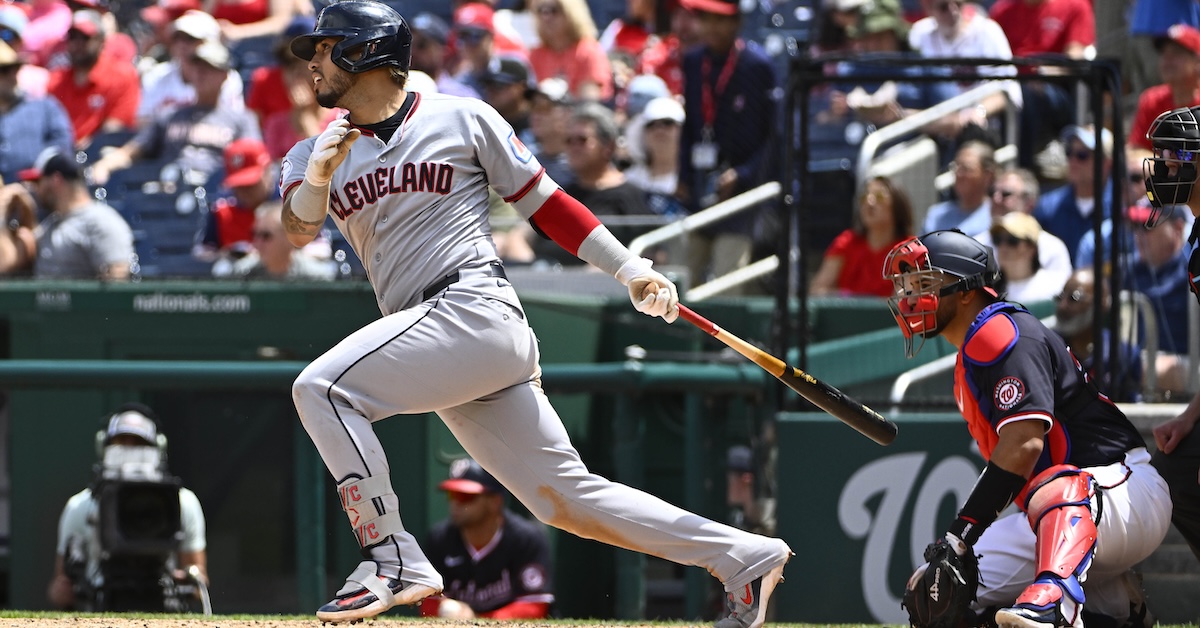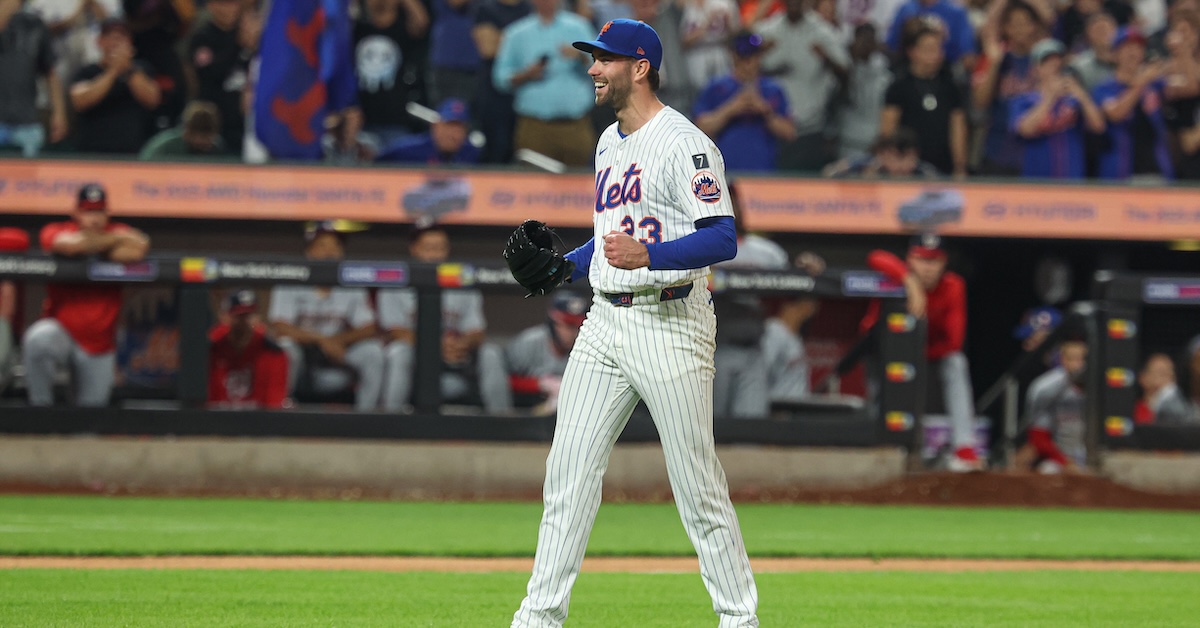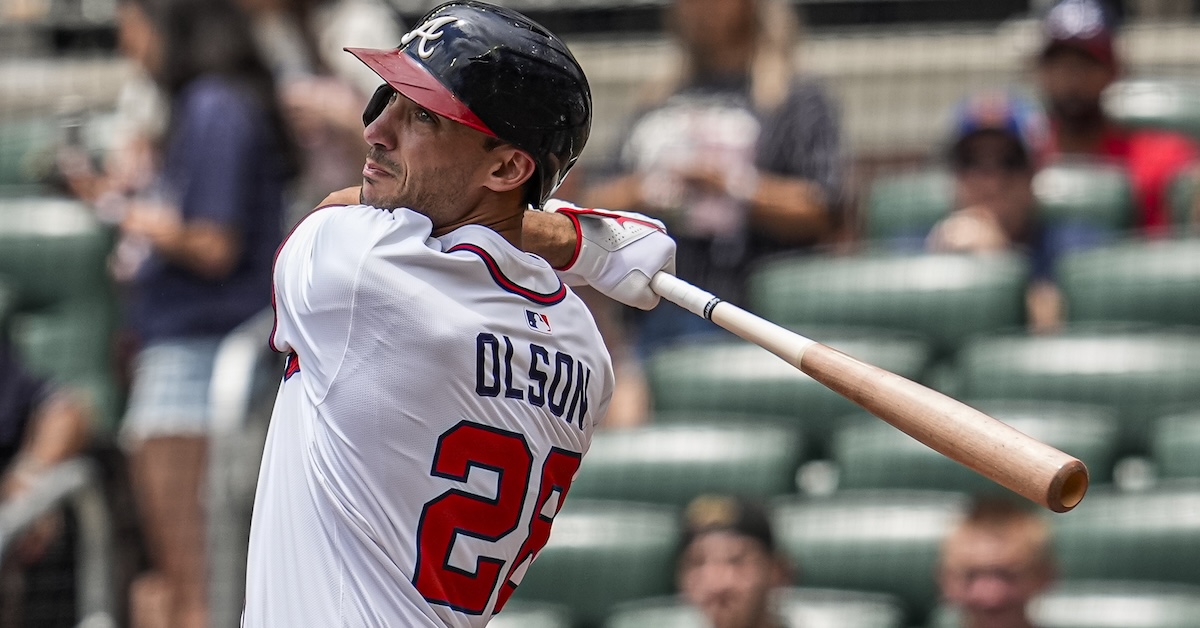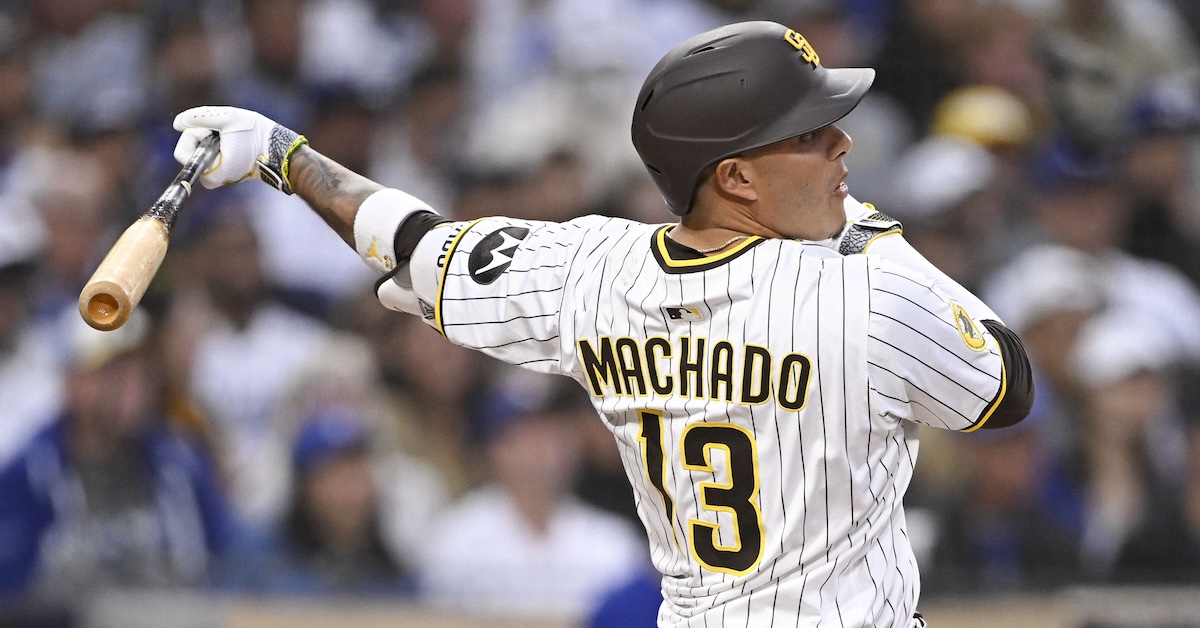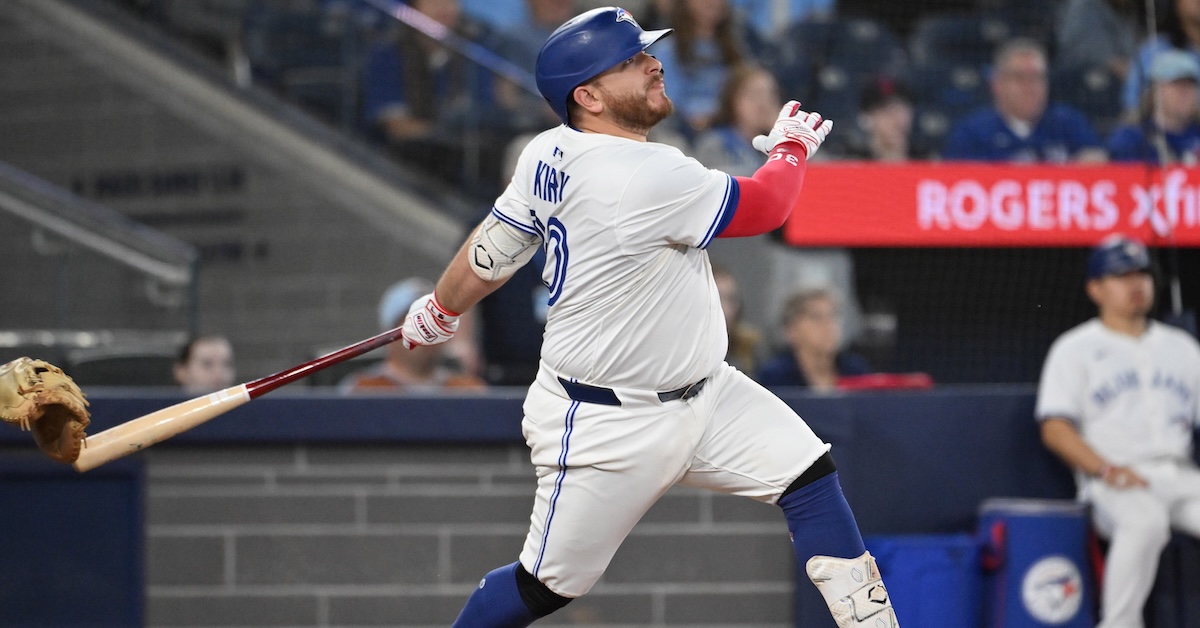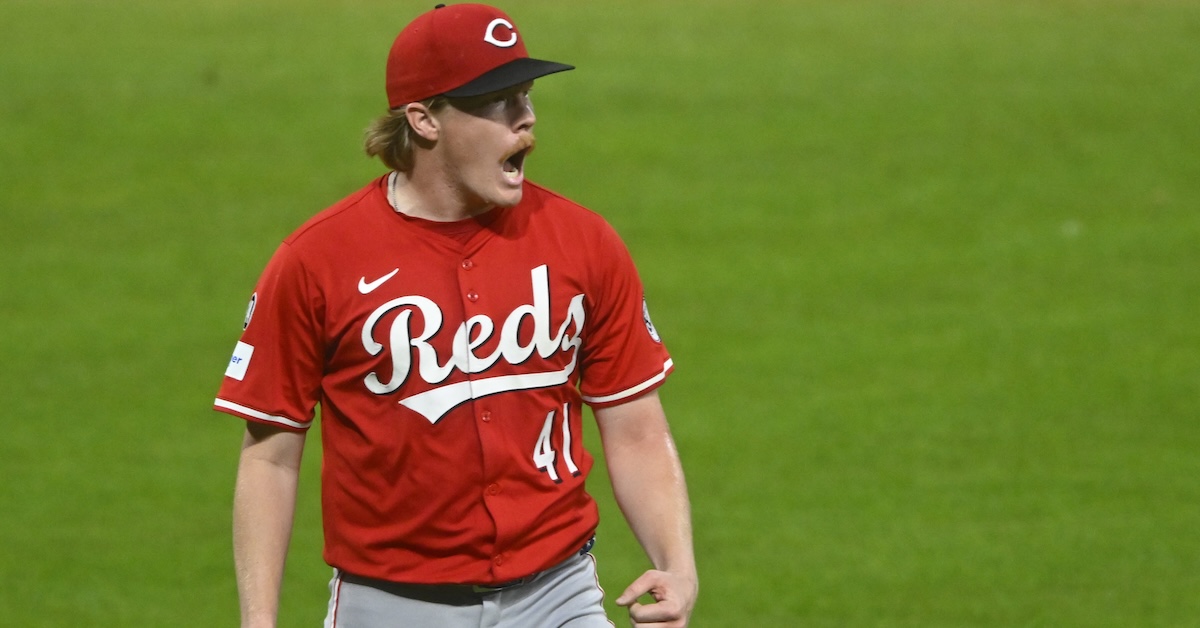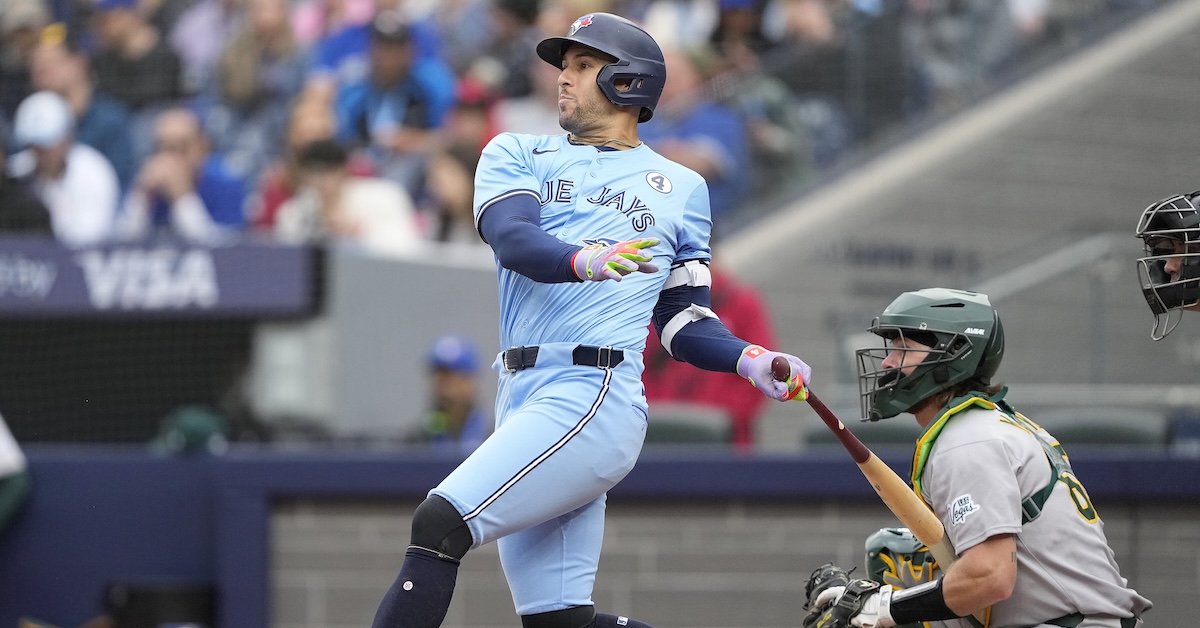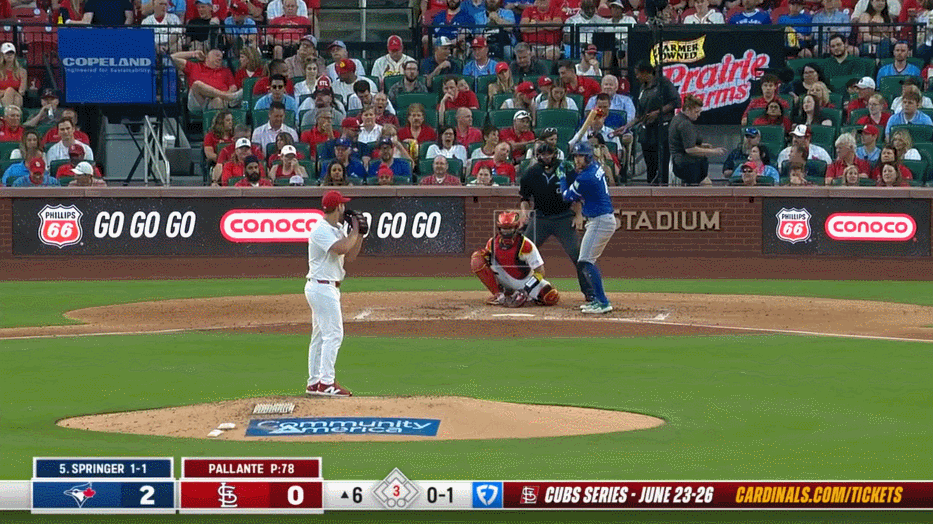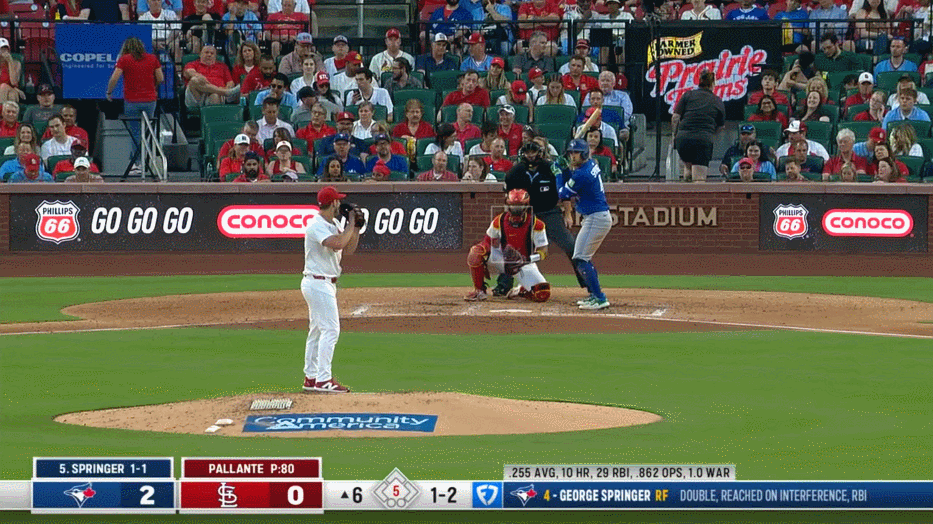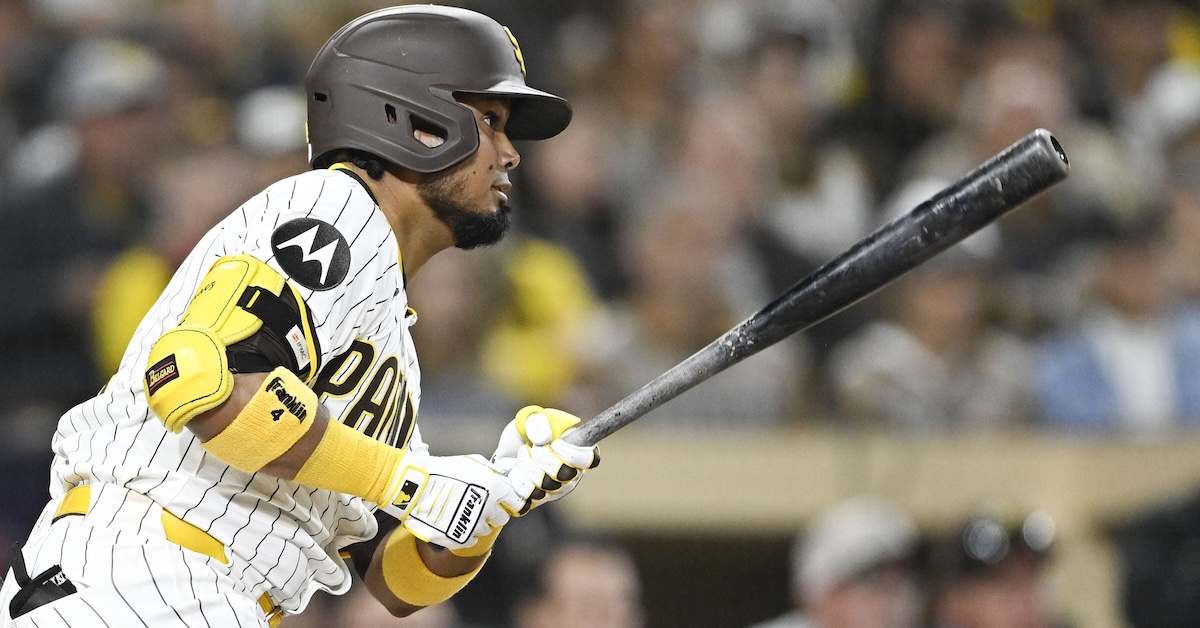A Walk’s as Good as an Aaron Judge
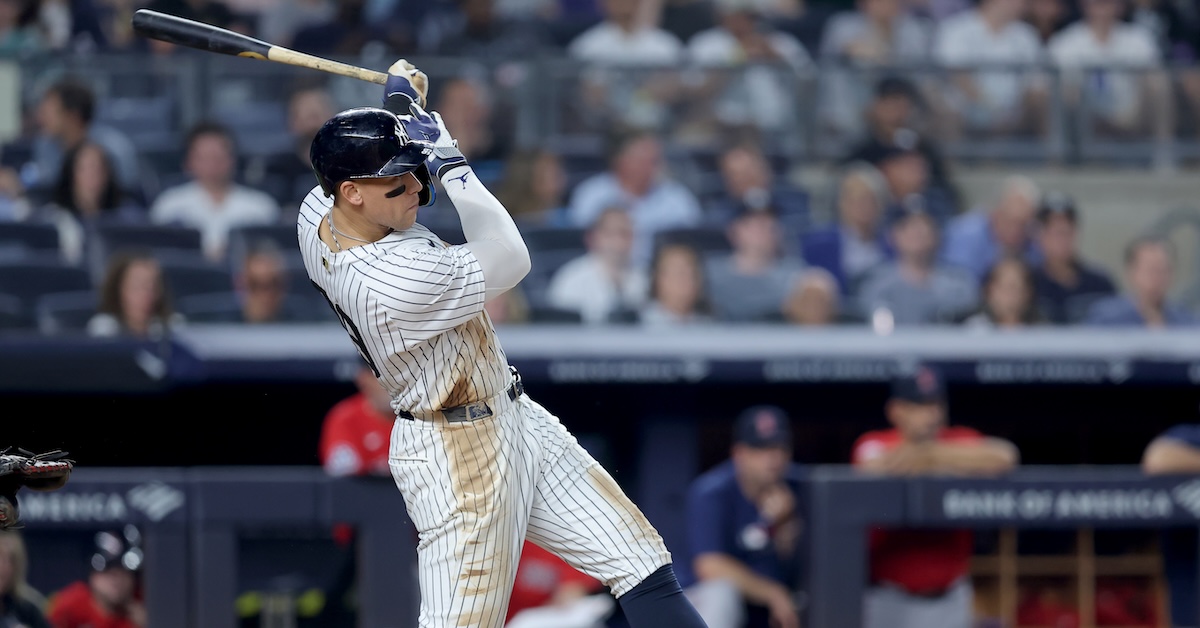
If you played baseball as a kid, you’re familiar with the phrase “a walk’s as good as a hit.” Your coaches probably shouted it at you. You probably shouted it yourself when your friend was at the plate with a three-ball count. Shouting a bromide is one thing, but believing it is another. We didn’t really buy it as kids, and for a while now, we’ve been able to quantify the difference. This season, hits have a wOBA of 1.129, while walks have a wOBA of .694. A walk, it turns out, is 61.5% as good as a hit. All of our coaches were liars.
On Wednesday, I was checking to see where Alejandro Kirk’s wOBAcon – his wOBA when he makes contact – ranked in relation to the rest of the league. The top of the list caught my eye. It couldn’t help but catch my eye. Aaron Judge is so far ahead of the pack he may as well be playing a different sport. He’s currently running a .685 wOBAcon. The difference between Judge and Cal Raleigh in second place is the same as the difference between Raleigh and Brandon Lowe in 47th place. Here’s the most shocking way I can find to express just how absurd Aaron Judge’s wOBAcon is right now: When Aaron Judge puts the ball in play, he’s nearly as good as a walk.
I know that may not sound particularly sexy, but that number is remarkable. A walk is a sure thing. It’s a bird in the hand. Putting the ball in play is a gamble. The league as a whole has a .362 wOBA on batted balls. A walk is nearly twice as valuable. This is why every couple years we write a whole mess of articles about how if batters were really smart, they’d just stop swinging. But there’s Aaron Judge, so, so, very close to having his batted balls be as valuable as a walk. He’s just nine points of wOBA away. That’s nothing. It’s the value of a popup to the second baseman.
If all this talk about Judge and the value of a walk is giving you déjà vu, that’s because just about a month ago, Ben Clemens wrote a whole article about when it makes sense to walk Judge intentionally. We’ll circle back to that point, but the first thing I did when I saw that number was try to figure out just how special it was. Turns out it’s pretty special.
I checked the pitch tracking era first. Since 2008, Judge is the only player in baseball to break a .600 wOBAcon. He’s done it three times, going .600 in 2017, .602 in 2022, and .617 in 2024. Mike Trout’s never done it. Shohei Ohtani, Yordan Alvarez, no one but Aaron Judge has done it, and this season he’s surpassing his 2024 mark by, at present, 68 points. Judge will likely cool off at some point, and over at MLB.com, Mike Petriello has addressed how much of his sky-high BABIP is the result of luck and how much is just coming from the fact that it’s really hard to field a ball that’s been hit at the speed of sound.
Still, this made me really curious. I started wondering whether anyone had ever been as valuable as a walk when they put the ball in play. That meant a lot of math, because wOBAcon isn’t readily available for players who preceded the pitch tracking era. I wanted to go all the way back to 1901, so I had to reverse engineer it by myself (and when I say “by myself,” I mean “with the help of Ben Clemens because he’s good at math”). I pulled the stats for every qualified player-season since 1901, so I had everybody’s wOBA and counting stats. I split each player’s plate appearances into three sections: balls in play, strikeouts, and walks/hit by pitches. To calculate the number of balls in play, I took at-bats, subtracted strikeouts, then added the number of sacrifices. Then I got to the algebra and set up an equation that looked like this:
Total wOBA = (BIPwOBA x BIP%) + (BBwOBA x BB%) + (KwOBA x K%)
(Since strikeouts have a wOBA of zero, I didn’t actually need the third part. It would always equal zero.) At that point, my numbers didn’t look quite right, so I went to Ben, who taught me that for arcane reasons, hit by pitches have a different wOBA from walks and intentional walks don’t count toward wOBA at all, so I had to rework my calculations some.
The numbers still weren’t perfect, sometimes because of rounding issues, but more often because we don’t have all the data, like intentional walks and sacrifices, for older players. With the help of Stathead’s Katie Sharp, I incorporated intentional walk data from Retrosheet to the players in the top 20. The Retrosheet data isn’t official, but it made the numbers more accurate, and I care more about that. So keep in mind that this isn’t iron-clad, but here you go, the highest wOBAcons ever recorded in a qualified season:
| Season | Name | wOBAcon |
|---|---|---|
| 2025 | Aaron Judge | .685 |
| 1920 | Babe Ruth | .684 |
| 1923 | Babe Ruth | .635 |
| 1921 | Babe Ruth | .634 |
| 1998 | Mark McGwire | .619 |
| 2024 | Aaron Judge | .618 |
| 2022 | Aaron Judge | .606 |
| 2017 | Aaron Judge | .600 |
| 2001 | Barry Bonds | .600 |
| 1924 | Babe Ruth | .595 |
Eight of the top spots belong to Aaron Judge and Babe Ruth; Ruth’s 1927 Murderer’s Row season also ranked 11th at .589. Judge is only one point above the all-time record, so he’ll almost certainly lose it at some point over the next 97 games, but he’s still 50 points above the third-place entry and 90 points above 10th place. He’s staying on this top 10 list unless something horrible happens.
More importantly, the answer to our question is “no.” Nobody’s has ever been as valuable as a walk when they put the ball in play. As a matter of fact, Judge is closer this season than anyone else has ever been. He may not beat Ruth in terms of overall wOBAcon, but keep in mind that wOBA is a seasonal constant. It changes every year based on the run-scoring environment. Back in 1920, walks had a wOBA of .741. This season, Judge’s wOBAcon is 98.7% the value of a walk. Ruth was at 92.3% in 1920, and that was the only season when anyone had ever reached 90%. If we look at things that way, Judge has two of the top three seasons of all-time, plus his current campaign, which is in first place and will likely stay there even after his BABIP luck runs out:
| Season | Name | wOBAcon | BBwOBA | BBwOBA% |
|---|---|---|---|---|
| 2025 | Aaron Judge | .685 | .694 | 98.7 |
| 1920 | Babe Ruth | .684 | .741 | 92.3 |
| 2024 | Aaron Judge | .618 | .689 | 89.7 |
| 2022 | Aaron Judge | .606 | .689 | 88.0 |
| 1998 | Mark McGwire | .619 | .713 | 86.9 |
| 2017 | Aaron Judge | .600 | .693 | 86.6 |
| 2001 | Barry Bonds | .600 | .704 | 85.3 |
| 1921 | Babe Ruth | .634 | .745 | 85.2 |
| 2013 | Chris Davis | .585 | .690 | 84.8 |
| 1923 | Babe Ruth | .635 | .751 | 84.6 |
Judge still has a shot at reaching the magic number, though he’d have to hit even better to do so. I don’t think that’s really something we can ask of Judge right now. It’d kind of be like if you were an Athenian and Pheidippides had just run all the way from Marathon and shouted, “We win!” and collapsed and died, and then you started nudging him with your sandal and saying, “That’s great buddy, but now that you’re back, could you run and get me a sandwich?”
Still, let’s get back to Ben’s article. Ben combined Judge’s stats over the last four seasons with a run expectancy matrix and win expectancy numbers to figure out when it was smarter to put Judge on than to let him hit. Ben allowed for a wider range, but the math indicated that the answer was very narrow: in the ninth inning of a one-run game, with two outs and a runner on second or third. That’s it. Other than that situation, it’s smarter to pitch to Judge than to walk him. A lot of this discussion is centered around risk aversion. It’s scary to give up a 500-foot homer to Aaron Judge, and that makes you overreact, giving him a free base when the numbers say that’s not the smart move. But maybe we’re right to be scared of Aaron Judge. First of all, he’s run a ludicrous 239 wRC+ since that article came out. That’s somehow worse than the comical 248 mark he had at the time, but it also represented an improvement on the numbers that Ben was running. Those numbers went back to 2022, when Judge ran a pathetic 206 wRC+. It makes more sense to walk Judge intentionally now than it did back in May.
Knowing all this, I’d like to run a quick scenario by you. Say you’re a pitcher facing down Aaron Judge. First of all, I’m so sorry. No one deserves to be in this position, and you should check and see whether you have any legal recourse against whoever got you into this mess. Second, take a moment to ask yourself a question: Can I strike out Aaron Judge? Seriously. Judge strikes out at a roughly average rate, which means that nearly 77% of the time that he comes to the plate, he doesn’t strike out. So be honest with yourself. Do you have it today? Is the slider biting? Does the ball feel good in your hand, or are the seams a little flatter than you’d like them to be? Did you sleep OK last night? If your answer to any of those questions is something other than, “Hell yeah, let me at him,” then it’s a very firm “no.” If you can strike out Aaron Judge, then by all means, pitch to him. You’ve got a 51% chance of getting him out and just a 15% chance of giving up extra bases. But if you don’t feel like you can strike him out, if your choice is either a walk or a batted ball, then you should probably just put him on. He’s 99% as good as a walk anyway.

